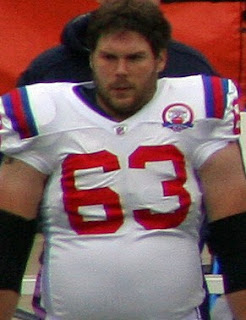Football
fat has another way of impacting the health of our nation. It is less direct, but broader, because it
affects everyone. To discuss this wider
impact, let’s talk about the Dutchess of Cambridge, a shoe company, and Joe
Camel.
In
2011, Wolverine Worldwide set sales records by moving $1.4 billion dollars of
footwear. Although Wolverine is
primarily known for its sturdy boots and casual Hush Puppies, one of its stars
of the year was a lesser-known brand: Sebago.
Sebago
sales took off when Kate Middleton took a Canadian boat tour in mid-July. On one of the days of her voyage she wore Sebago
boat shoes. And all of a sudden, sales
started to take off.
Now,
Sebago boat shoes are just great.
They’re well-made and look very nice.
However, they were just as well-made and good-looking before Kate
Middleton slipped them on over her shapely toes. The association of the product with an
admired, extremely attractive individual didn’t change the product, but it
certainly changed the product’s perceived value.
Hundreds
of billions of dollars are spent each year to chase after this branding
effect. According to Forbes magazine, Michael Jordan’s brand
generated $1 billion in sales to Nike alone—eight years after Jordan had last
played competitive basketball. The
effect is obviously a powerful one: we want to become more like the people we
admire, and we’re willing to pay good money to try to do so.
Cigarettes
again provide useful insight. When
television and radio advertising were banned in 1964, approximately 42% of the
American adults smoked. After five years
without television and radio branding, the figure was down to 37%. By 1990, it was down to a quarter of American
adults, and now it is fewer than one in five.
Branding changes what is perceived as acceptable or desirable.
This
effect is not only driven by advertisements and celebrities; we change to
become more like the peers we admire as well.
Recent research by Mir
M. Ali, Aliaksandr Amialchuk, and Frank W. Heiland concludes that “[t]he social transmission of weight-related behaviors is
a viable explanation for the spread of obesity in friendship networks”. If
a young person spends time with others who eat fast food, shun exercise, and
gain weight, that young person is more likely to fall in line.
Another study, published in the New
England Journal of Medicine, studied over 12,000 people and examined what
happened when one person gained weight.
The study made a shocking discovery: when someone’s friend became obese,
that person was 37% more likely to become obese themselves. News outlets jumped on this report: fat can
be contagious.
We become what we admire, and we
become what we habitually see. Have we
reached a tipping point, then, with regard to obesity?
The statistics are shocking:
percentage of obese Americans (BMI > 30) has tripled since 1960. The percentage of morbidly obese Americans
(BMI > 40) has risen by five hundred percent. Obesity costs America $190 billion dollars a year in health costs; that’s over 20% of every
medical expense in the nation.
Because obesity is strongly correlated
with higher absenteeism from work, Eric Finkelstein of Duke University
estimates that obese Americans cost businesses $30 billion dollars, simply due
to lost productivity. And because our
cars have to lug overweight Americans around, they burn a billion more gallons
of gas than they would if we weighed the same as we did fifty years ago.
What does any of this have to do with
football?
Well, certainly thousands of young men
whose coaches pressure them into bulking up contribute directly to the issue;
however, reasonable people ought to conclude that the effect of branding plays
a role.
Little Johnny sees Big Bubba Lineman
and his belly tumbling around on national television. Dad loves Big Bubba, which means that Johnny
does, too. When Johnny starts to notice
his own little bundle of blubber, he’s downright proud of it; he’s a little
more like that guy on TV.
Don’t believe it? Here’s a the way an article on
bleacherreport.com introduced a slideshow called “Glutton Bowl”:
“[T]his is American football. We like
to drink multiple beers with hot dogs and hamburgers at 10 a.m. before the
games officially kick off.
Isn't it natural for us to be drawn
to the big guys that get it done on the field every week? As a big guy myself,
I have to be honest—I tend to cheer a little bit harder for the fat boys.
Here's an homage to the guys that do
their part to re-define what a professional athlete looks like—these are the
men that made it honorable to be huge.”
Sound familiar? If it doesn’t, you haven’t been paying
attention. Football coverage is replete
with similar examples. The sport can’t
hide from the obesity, so it revels in it.
Fat is glorfied.
If branding is powerful and fat can be
contagious, can the impact of all these hulking bulks be anything but
detrimental? Are there millions of
Americans who can thank football for thinking it is “honorable to be
huge”? Have we somehow made it
un-American to be healthy, and American to be disgustingly obese?
If so, it costs us billions of
dollars. More importantly, obesity kills
as many as a thousand people every day.
In nine years, the nation has lost
over 4,000 soldiers in Iraq;
obesity kills more people every week. We
glorify obesity at our peril



